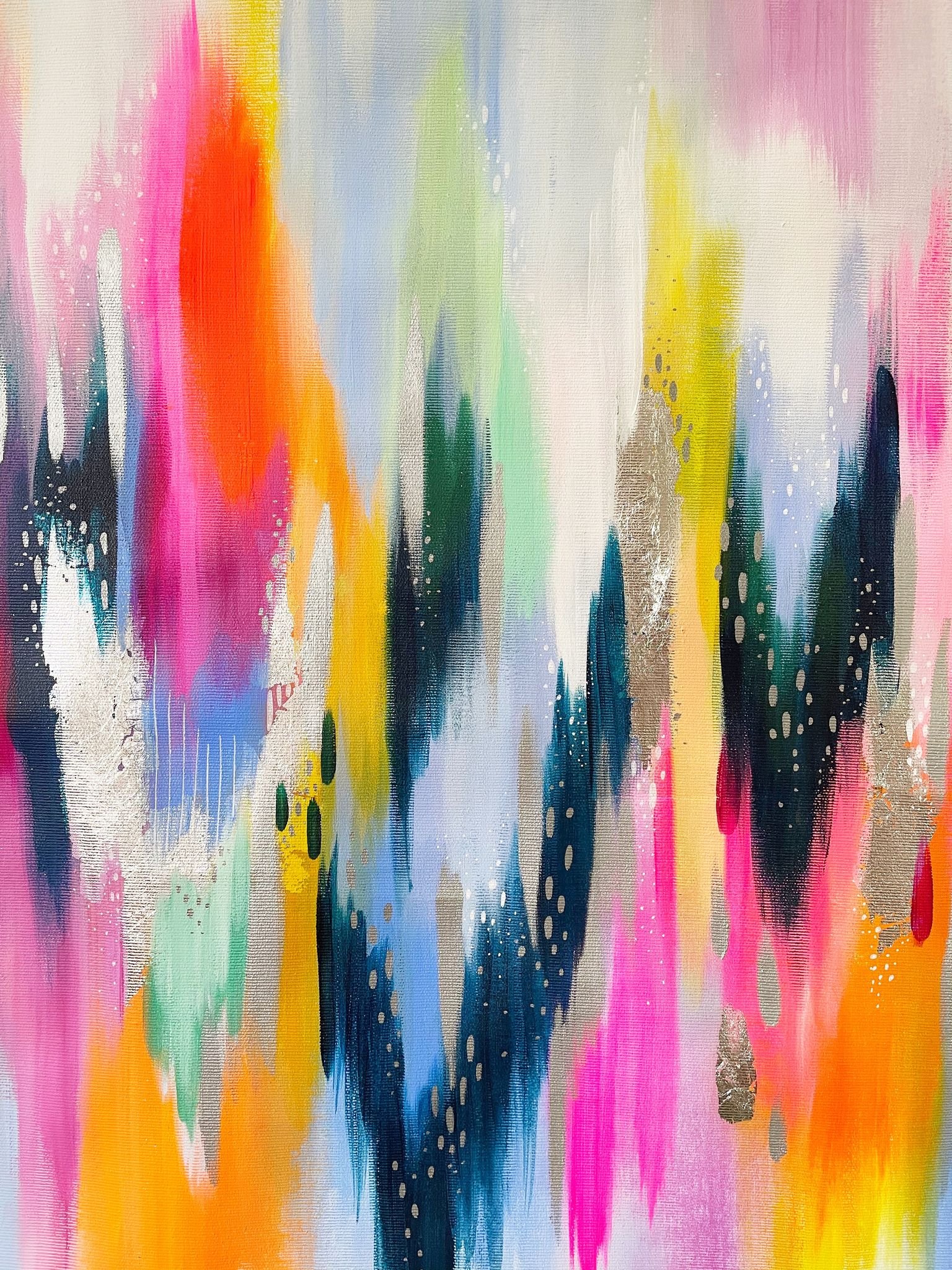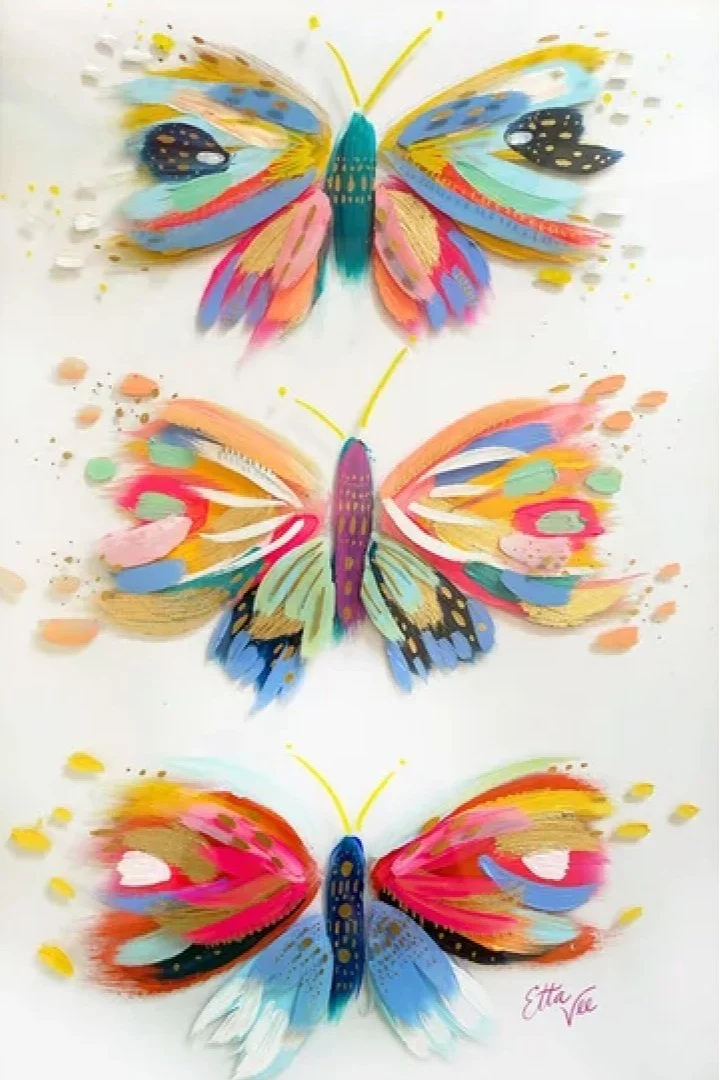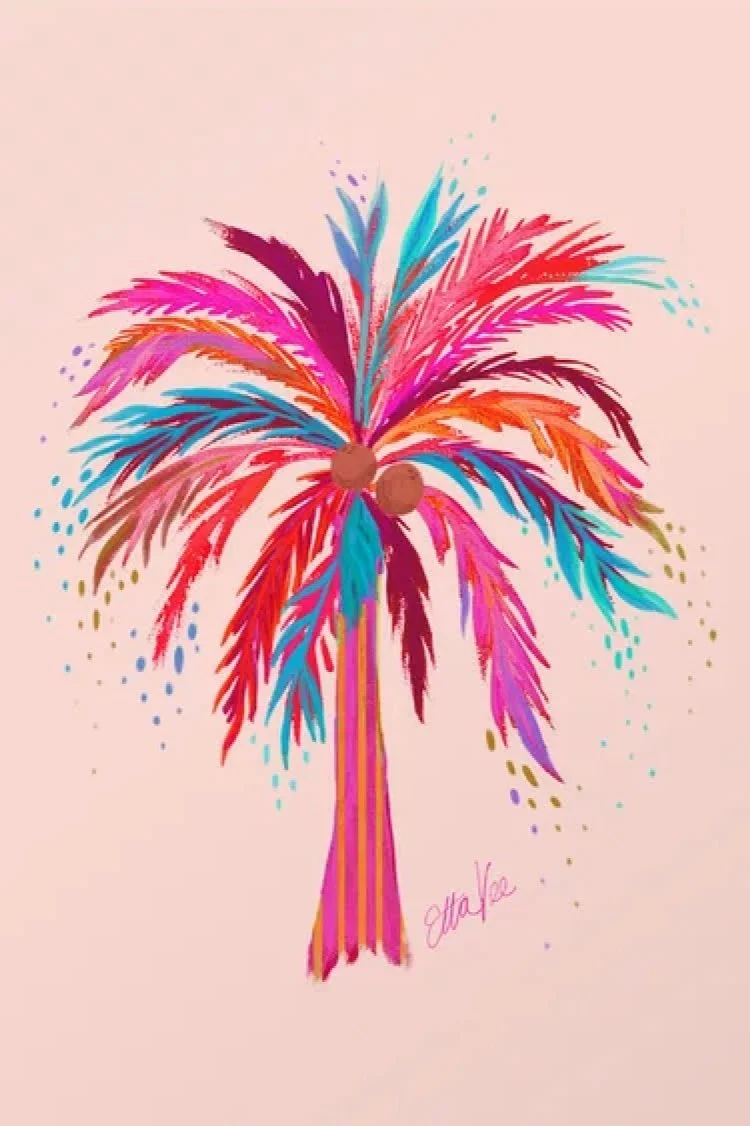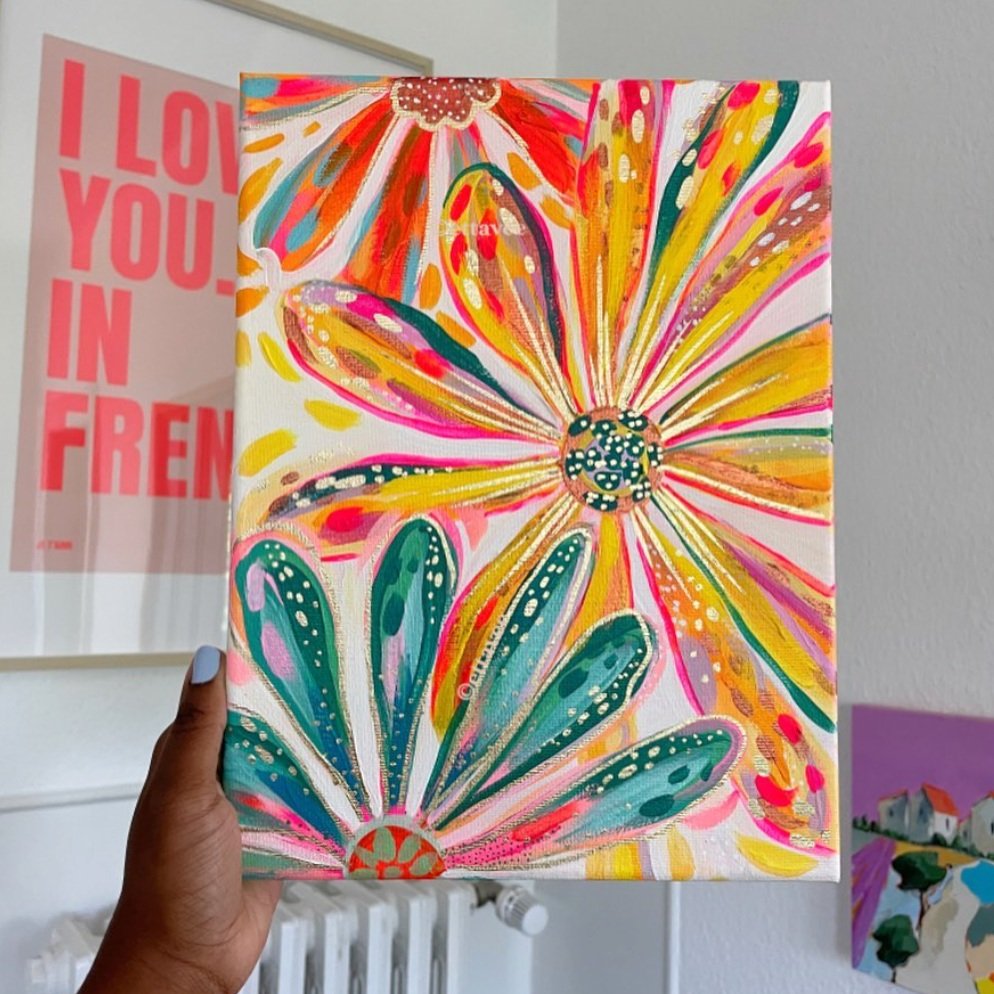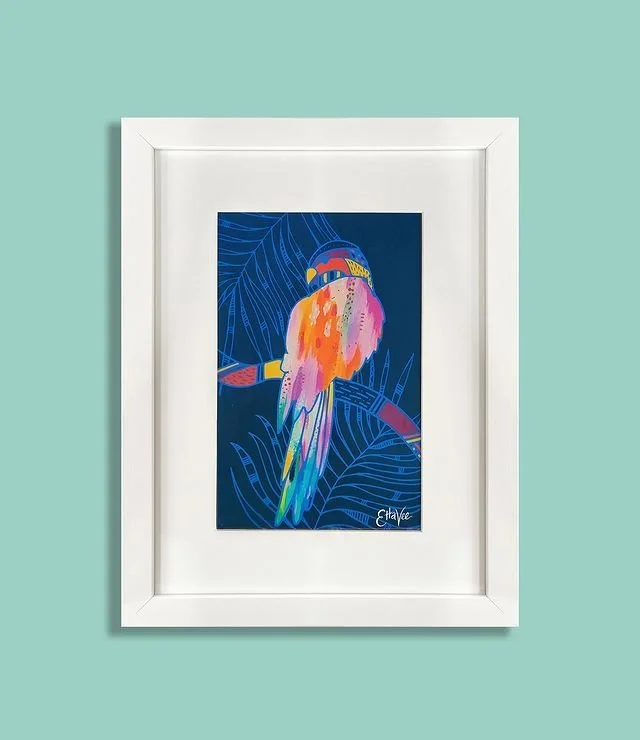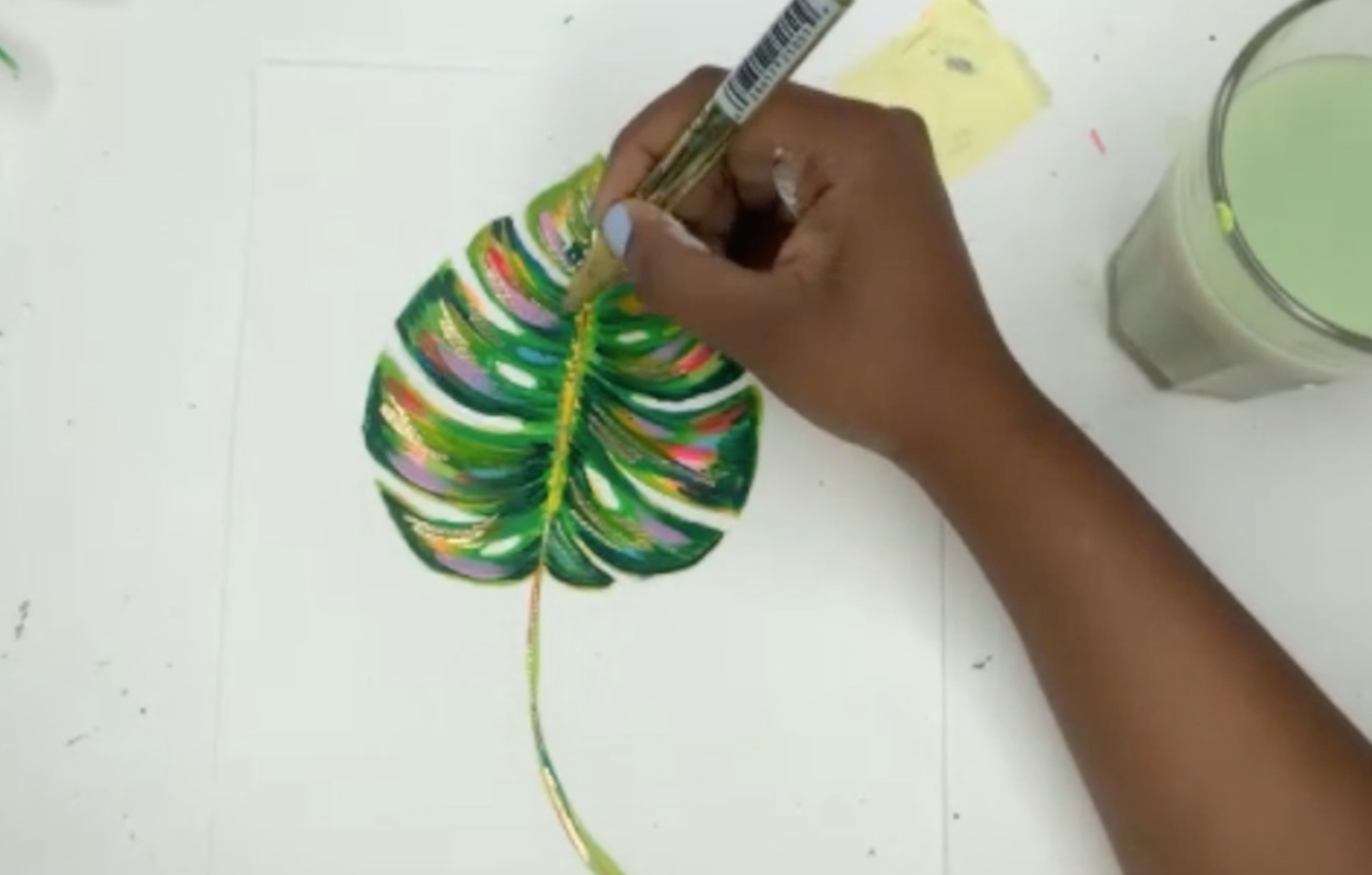How to Paint Realistic Motifs in an Abstract Painting Style
Have you ever wondered how to apply abstract painting techniques to a realistic motif? In this blog post, I’ll walk through how to do just that! This will help you find your style and discover how to create paintings with mass appeal while keeping things playful, colorful, and abstract!
Abstract painting is the heart of the EttaVee brand. My love for color is what drove me to discover my signature style of painting with bold, colorful brushstrokes.
As I started to expand into the world of art licensing, I figured out that I needed to grow my portfolio beyond just abstracts. When you’re collaborating with brands to sell your artwork on products, they want to purchase designs that will appeal to a wide audience. So I started to work on painting trending motifs in my own colorful style. I wasn’t sure how it was going to turn out, but with practice, I was able to hone my skills and find a way to bring colorful brushstrokes to motifs like tropical leaves, butterflies, animals, flowers, and many more.
If you want to grow and sell your artwork on products, learning how to take your abstract style and turn it into realistic motifs is a great skill to learn!
So how did I actually do it? Read on to find out! Or if you’re more of a video person, I walk through my process in my class, Paint an Abstract Monstera Leaf!
Tip 1: Know the elements of your style
It’s important to know some foundational elements of your abstract style before diving into applying it to recognizable motifs. I know this can be daunting, especially for new artists. But think of yourself as a style detective. What do you gravitate towards in abstract art? Do you use certain brushstrokes? Do you favor certain textures? What colors do you tend to use? What kind of movement do you put into your pieces?
I tend to paint with bold, vibrant colors using textured brushstrokes. So when I started to apply my abstract techniques to realistic motifs, I knew I wanted to keep hints of colorful brushstrokes throughout my illustrations while making sure the object was still recognizable!
Tip 2: Practice & Explore
Now that you’ve identified the key elements of your style, it’s time to experiment – a lot! One of my favorite motifs to practice with was florals. Flowers are a great place to start if you’re a colorful painter like me. Flowers are vibrant already, so I was able to easily explore painting them with colorful brushstrokes! As I was painting flowers I started to discover what worked and what didn’t in translating my brushstrokes to a realistic motif. I noticed when there was too much color (is that even a thing?? 😅) and how to make sure that they looked recognizable even when I was using abstract brushstrokes.
Be curious and keep an open mind in this process. Go into it with the intention to learn what works and what doesn’t. And when something doesn’t work, don’t beat yourself up! Just treat it as a stepping stone on the path to discovering your style.
Tip 3: Layers
My next tip is to work in layers! You can add multiple pops of color into a piece knowing that you can always cover them up. In this example, I started with some bright pops of color on this monstera leaf and added green layers on top to make it look more realistic while keeping little flashes of color showing through.
Tip 4: Follow some of the realism rules
Even though the goal is to bring abstract techniques to realism, it can help to follow some of the realism rules. Specifically with the shape and shading of your object.
Defining the shape of what you’re painting makes it undeniably clear what it’s supposed to be. In this parrot illustration, I enhanced the shape with blue lines and defined details like the eyeball and beak so that they stood out.
In the monstera leaf example above, I chose to add dimension to the illustration by painting the inside of the leaf and the tips darker to give it the appearance that it was bending from the stem to the tip of the leaf. This small detail makes it instantly more recognizable and realistic – even if there are pops of hot pink throughout the leaf!
Tip 5: Be Bold!
The last tip is to be bold and try something unexpected! You may have gotten your illustration to a comfortable place, but I’d encourage you to try adding a bold swash of color to see what happens. If it doesn’t work, no problem! But I’ve found that bold accent strokes like this can really make a piece sing!
In my monstera leaf example, I was pretty sure I was finished with the painting, but I was inspired to add a bold pop of light pink. I liked how it turned out, so I added some hits of yellow which ended up looking like sunlight on the leaf and giving it even more dimension. And I also added some gold embellishments to make it really pop! I’m so glad I didn’t stop when I thought I was finished since the final result was much more dynamic and fun!
I hope this overview inspires you to bring some abstract vibes and colorful joy to the next “ordinary” object you paint!
If you want to follow along with my process step-by-step, join me in my Abstract Monstera Leaf painting class where you’ll paint along with me and discover how to add pops of color while creating a recognizable and wildly popular tropical leaf!
Pin this post for later! 📌
Hover or tap on this image and click the “Save” button on the top left!

